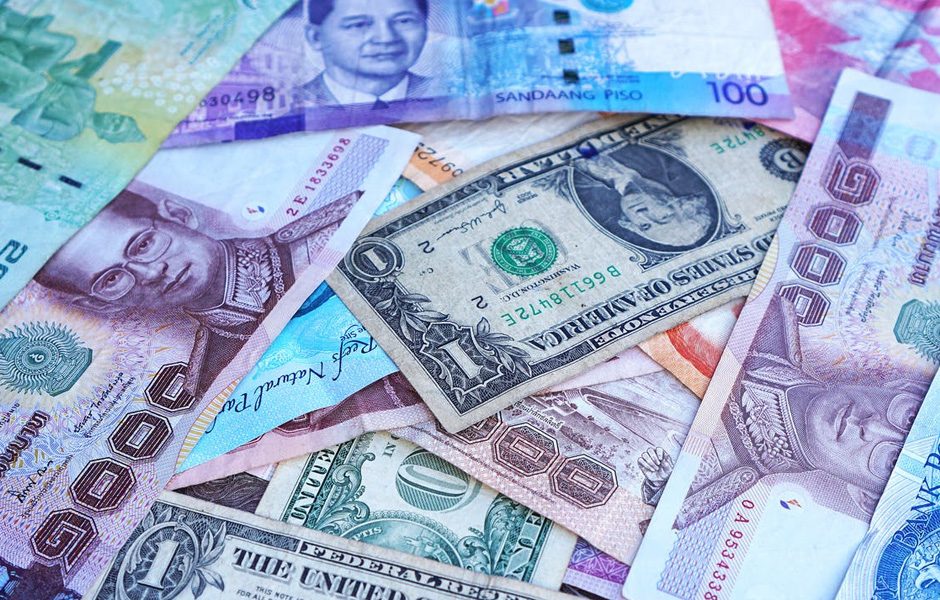Luxury Portfolio International Trends
Trend 1 — Luxury buyers outnumber luxury sellers by a nearly 3 to 2 margin, resulting in historic low inventories of luxury properties in some hot markets. Even in cooler markets, sellers who have updated their properties are having the most success, occasionally aided by reduced pricing.
Trend 2 — The desire for greater privacy and perceived exclusivity is fueling an increasing number of “private” (non-public) sales listings. Top agents with experience in discretion and confidentiality are being selected to assist.
Trend 3 – Eco-friendly, energy efficient and security effective homes are desired as a reflection of the buyers’ values and lifestyles. Only a minority (around 1/3) think smart phones and internet connections should control/operate the home security system, reflecting a lack of trust in the privacy offered by smart phones or internet connectivity.
Trend 4 – The top 3 reasons for buying $1 million-plus homes are: a) improved quality of life; b) financial investment for portfolio; and c) change of scenery. Buyers see these purchases as a reflection of their personal achievement. Source: Global Luxury Real Estate Report 2017, Luxury Portfolio International
Political Trends
Globally, those who are literally “hell-bent” to start World War III as a means of population control are increasingly being defeated at every turn. There is increasing optimism that peace in the world may break out.
The displacement and forced migrations of populations from the ravages of war are a continuing problem in many formerly desirable markets. It will be some time before conditions stabilize sufficiently to allow return to homeland, in the meantime creating social turbulence and the outbreak of nationalism in the countries receiving the migrants.
Nevertheless, these situations are resulting in the buying opportunities of a lifetime. Uncertainty always creates opportunity.
Economic Trends
It is generally recognized that election of a U. S. President of either political party results in a temporary upward bump in the market place. But the election of the current President (Donald J. Trump) has unleashed economic optimism that has been pent up for at least the last 10 years of his predecessors in office.
We feel that the optimism for a period of peace and prosperity is truly global and may signal a period of unparalleled growth. Since real estate prices are notoriously subject to cycles, proper planning may require shorter exit strategies than the 5 years we customarily recommend, perhaps as short as 2 years to take advantage of the run-up in prices.
Social Trends
Fueled by anti-immigrant sentiment, the social contract is becoming increasingly polarized. Notwithstanding the fact that some, if not a substantial part, of the social upheaval was deliberately induced, the average person no matter his nationality or religious beliefs wants the freedom to live in peace in a law-abiding society. This trend is solidifying and spreading uniformly across all borders and nationalities, which will ultimately eliminate the induced polarization.
The salient point which is most often missed or ignored, is that immigration per se is not the issue. Instead, the issue is the forced homogeneity of vastly disparate cultures by governments upon their people. We know this is true, because increasing percentages of high net worth individuals are “extremely likely or very likely” to permanently move to another country in the next 10 years. (Source: Global Luxury Real Estate Report 2017, Luxury Portfolio International). Given the freedom to do so by removing the governmental manipulation, people everywhere will choose the culture into which they wish to peacefully assimilate.
Real estate prices which may be depressed because of social conflicts will, over time, return to adjusted pre-conflict levels, thus rewarding the shrewd buyer.
Religious Trends
Religious organizations are losing membership and corresponding financial clout as adherents are opting for a more personally-exercised faith and personal charitable giving for concrete, observable benefits to the less fortunate (in contrast to the organization).
This trend reflects an almost universal awareness that a meaningful life is almost as much a priority as a happy life. Such psychographics uniformly manifest in home-buying selections, spread across the needs of the entire family.
Thus, homes with large open areas for entertaining guests are desirable in the market, and the same is true for outdoor kitchens and “statement” kitchens. Buyers want proximity to available team sports for kids and other child-friendly activities, and venues for volunteerism. Homes may be the family “castle”, but now the castle is intended for wider inclusion not seclusion.
Pricing Trends
We have previously stated that properly-purchased real estate can function as a reserve asset vis-à-vis holding a currency different from that of your home country. Purchases of multiple homes in the United States by foreign nationals is the leading indicator of the national trend toward increasing prices. Thus, foreign nationals recognize that it is smarter to put U. S. Dollars into a property that is increasing in value than to put the same dollars into a bank account paying virtually no interest.
According to the National Association of Realtors, “In January, 2018, the median price of existing homes sold rose to $240,500, up six percent from one year ago.” (emphasis added) (“REALTORS® Expect Prices to Increase to Nearly 4% in Next 12 Months”, Economists’ Outlook). That is a 10% change over the time period of January, 2017 to January, 2019, if accurate.
We think that this figure, which entails the broadest possible cross-section of the entire country is understated for the luxury market in the states having the largest influence of purchases by foreign nationals; to-wit (in order of shares of the $153 billion of purchases): Florida (22%), California (12%) and Texas (12%). (Source: “Foreign U.S. Homes Sales Dollar Volume Surges 49 Percent to Record $153 Billion”, National Association of Realtors, July 18, 2017).
Because of the currency trends which we discuss next, we believe these prices will rapidly increase in the United States over the foreseeable future. For the immediate future, while the dollar is at its strongest in terms of buying power, we believe non-U.S. purchases are the way to have a reserve asset in the local currency as a hedge against the future decline in the dollar in comparison to other currencies.
Currency Trends
Note: Currency exchanges are widely recognized to be manipulated by governments the world over. For purposes of our analysis, we simply acknowledge that such manipulation exists and set it aside as a factor that could affect any particular currency market at any time.
Almighty Dollar: The continued worldwide hegemony of the petrodollar is over. The question is not if the petrodollar will be supplanted, but rather, when. Currently, the dollar is strong, with corresponding purchasing power versus some other currencies. Thus, savvy buyers should take advantage of this purchasing power.
The competition against the petrodollar is formidable and gaining strength every day. The BRICS nations and their clearinghouse bank (AIIB, recently created and funded) intend to put the World Bank and its stranglehold on all international transactions in a distant second position.
However, there are bazillions (meaning, very many) dollars in the hands of foreign governments and non-U.S. nationals. When the stampede to unload dollars begins, and we believe it certainly will, there is only one place where those dollars will always be welcome—the United States of America. A classic inflationary cycle will begin: more dollars chasing fewer goods; and there is already a shortage of inventory of luxury properties. The predictable result will be that prices will go through the roof! Savvy buyers should take advantage of this situation, as well, while time permits.
Mexican Peso: According to Forex, in April, 2008, one U.S. Dollar could be exchanged for 10.45 Mexican Pesos. At the time of this writing, the same Dollar will purchase 18.62 Pesos. Thus, a property purchased for slightly over $1 million with no adjustment for appreciation today is worth approximately double in Pesos, just from the currency exchange. Our excitement for this buying opportunity is exceeded only by our sadness for the average working consumer in Mexico, who has seen approximately one-half of his purchasing power lost through the effective devaluation of the Peso.
Returning to our example, currency gains are magnified if (in addition to the currency gain) property is purchased with proper appreciation potential. Thus, location of the proper market, an appropriate exit strategy, and a trending property are the necessary elements for maximum gain.
Chinese Yuan Renminbi: According to Wikipedia, “(s)ince 2006, the renminbi exchange rate has been allowed to float in a narrow margin around a fixed base rate determined with reference to a basket of world currencies. The Chinese government has announced that it will gradually increase the flexibility of the exchange rate. As a result of the rapid internationalization of the renminbi, it became the world’s 8th most traded currency in 2018 and 5th by 2015.” (Source: Society for Worldwide Interbank Financial Telecommunication [“SWIFT”], 2013-10-8 and 2015-1-28.)
The exchange rate in April, 2008 for $1 US was 6.9985 Renminbi; at the time of this writing it is 6.28 Renminbi. Gradual, indeed! We look for the Chinese to unload dollars in the United States.
British Pound: Again according to Forex, in April, 2008, the British Pound Sterling would exchange 0.6998 of a Pound for $1 US. Today, the same dollar can be exchanged for 0.5056 of a Pound, a change of 7.22% over the 10-year period or a favorable change of 7/10ths of one percent per annum.
Thus, in addition to all of its other woes with forced migration, Brexit, and the customary political wrangling, the British Pound has basically maintained a parity with the petrodollar, neither devaluing nor appreciating. The wild card: Great Britain has announced its intention to join the BRICS alliance. This moves select properties there into a favorable buy climate in our opinion. We look for Europeans in general to unload dollars in the United States.
Summary: Increasingly, global buyers must have a working knowledge of many factors to stay ahead of events and to spot key trends. The information is there, and so is the help.




No Comments